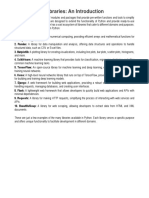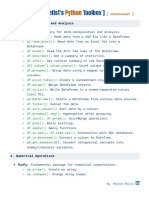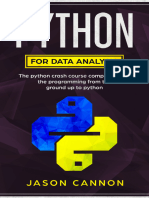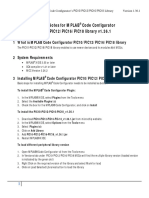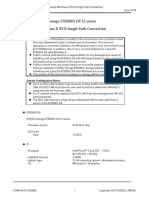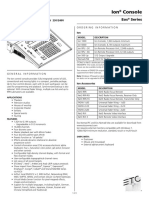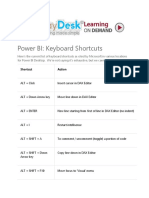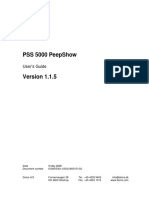0% found this document useful (0 votes)
20 views3 pagesIn Python, A Library Is A Collection of Pre-Writt...
Python libraries are collections of pre-written code that provide functions and classes for various tasks, ranging from simple utilities to complex frameworks. Notable libraries include NumPy for scientific computing, Pandas for data analysis, and TensorFlow for deep learning, among others. These libraries can be built-in or third-party, and they significantly reduce the need to write code from scratch.
Uploaded by
Saksham RaiCopyright
© © All Rights Reserved
We take content rights seriously. If you suspect this is your content, claim it here.
Available Formats
Download as PDF, TXT or read online on Scribd
0% found this document useful (0 votes)
20 views3 pagesIn Python, A Library Is A Collection of Pre-Writt...
Python libraries are collections of pre-written code that provide functions and classes for various tasks, ranging from simple utilities to complex frameworks. Notable libraries include NumPy for scientific computing, Pandas for data analysis, and TensorFlow for deep learning, among others. These libraries can be built-in or third-party, and they significantly reduce the need to write code from scratch.
Uploaded by
Saksham RaiCopyright
© © All Rights Reserved
We take content rights seriously. If you suspect this is your content, claim it here.
Available Formats
Download as PDF, TXT or read online on Scribd
/ 3
